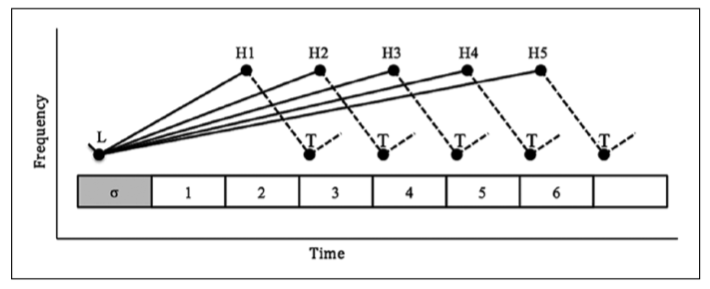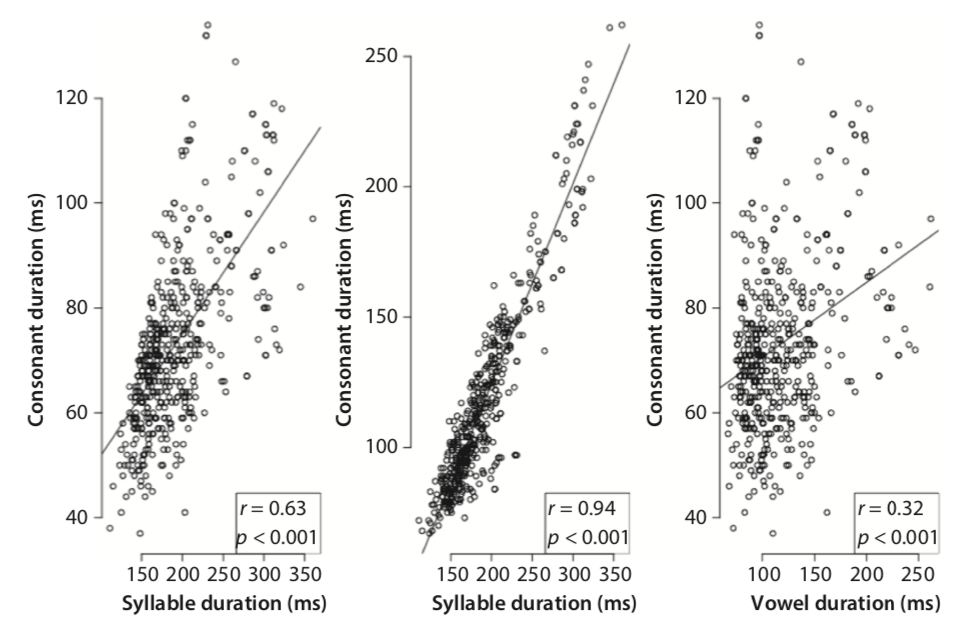Speakers express linguistic and non-linguistic information through prosody. Linguistic prosody manifests meanings, such as new and old information, designates the boundaries of phrases and utterances, and expresses questions, commands, and statements using different melodic patterns. In conversations, prosody is a cue for allocating turns (e.g., turn continuation, turn completion, etc.). Non-linguistic prosody manifests emotional or affective information (excitement, sadness, etc.) and other physiological information (e.g., gender, age, and body size). The project aims to determine the effects of information structure on prosody and model how prosody (we studied mainly pitch accents and duration) realizes focus, contrast, and topics in two dialects of Greek, Standard Modern Greek, and Cypriot Greek.
This research was part of my Ph.D. project. I have investigated the prosodic manifestation of linguistic prominence and showed that tone alignment with segments, pitch range, and syllable duration manifest crossdialectal types of information focus, topics, and contrast (e.g., Themistocleous 2011; Themistocleous 2016). In Themistocleous (2014), I specified how tones and final lengthening interact with syllable structure to mark the boundaries of phrases. The study provided evidence for two diverse sources that explain **final lengthening**: the tonal lengthening and the boundary lengthening. In a subsequent study, I had evaluated three hypotheses concerning the alignment of melodic tones with the segmental structure. The hypotheses postulate that tones align to specific *anchors* or keep an invariant distance between each other. The study cast doubt on these accounts and challenged existing timing criteria that determine pitch accents as phonological units. Moreover, it proposed a new account for tonal alignment that postulates that tones align within a specific range, namely an anchorage, instead of a particular anchoring point, which I called “the anchorage hypothesis” (Themistocleous 2016). The findings also laid the groundwork for a computational model of speech prosody based on neural networks (see Berndardi and Themistocleous 2017).
Gaining insight into how prosody is produced and perceived is of utmost importance for addressing essential issues about speech production. Such information would have realworld importance in explaining how temporal and frequency information is parsed in the brain. Further research on prosody can have significant applications in language disorders, such as aprosodia and aphasia.
Papers with Code
 |
Themistocleous
Charalambos (2016). Seeking an anchorage: Evidence from the tonal alignment of
the Cypriot Greek prenuclear pitch accent. Language and Speech, 59(4):433–461.By exploring
the timing of the Cypriot Greek L*+H prenuclear pitch accent, this study tested the predictions of
three hypotheses about tonal alignment: the invariance hypothesis, the segmental anchoring
hypothesis, and the segmental anchorage hypothesis. The findings on the alignment of the high tone
(H) are both intriguing and unexpected: the alignment of the H depends on the number of unstressed
syllables that follow the prenuclear pitch accent. The `wandering' of the H over multiple syllables
is extremely rare among languages, and casts doubt on the invariance hypothesis and the segmental
anchoring hypothesis, as well as indicating the need for a modified version of the segmental
anchorage hypothesis. To address the alignment of the H, we suggest that it aligns within a
segmental anchorage–the area that follows the prenuclear pitch accent–in such a way as to protect
the paradigmatic contrast between the L*+H prenuclear pitch accent and the L+H* nuclear pitch
accent.
Link to the Language and Speech paper: [PDF] |
 |
Themistocleous Charalambos
(2014). Edge-Tone Effects and Prosodic Domain Effects on Final Lengthening.
Linguistic Variation 14(1). 129–160This study reports two experiments that investigate the
edge-tones and domain-specific effects on final lengthening. The study shows that in Cypriot Greek
the following occur: (a) lengthening applies primarily on the syllable nucleus not the syllable
onset, which suggests variety specific effects of lengthening; (b) lengthening depends on the
edge-tones, namely, polar questions trigger more lengthening than statements and wh-questions; (c)
lengthening provides support for at least two distinct prosodic domains over the phonological word,
the intonational phrase and the intermediate phrase; greater lengthening associates with the first
and shorter lengthening with the latter; (d) finally, syllable duration depends on the syllable
distance from the boundary. By pointing to the distinct lengthening effects of edge-tones and
domain-boundaries, the aforementioned findings highlight the application of different lengthening
devices. Link to the PDF paper: [PDF] |
References
Themistocleous Charalambos (2016). Seeking an anchorage: Evidence from the tonal alignment of the Cypriot Greek prenuclear pitch accent. Language and Speech, 59(4):433–461, DOI: 10.1177/0023830915614602.
Themistocleous Themistocleous Charalambos (2014). Edge-Tone Effects and Prosodic Domain Effects on Final Lengthening. Linguistic Variation 14(1). 129–160. DOI: 10.1075/lv.14.1.06the.
